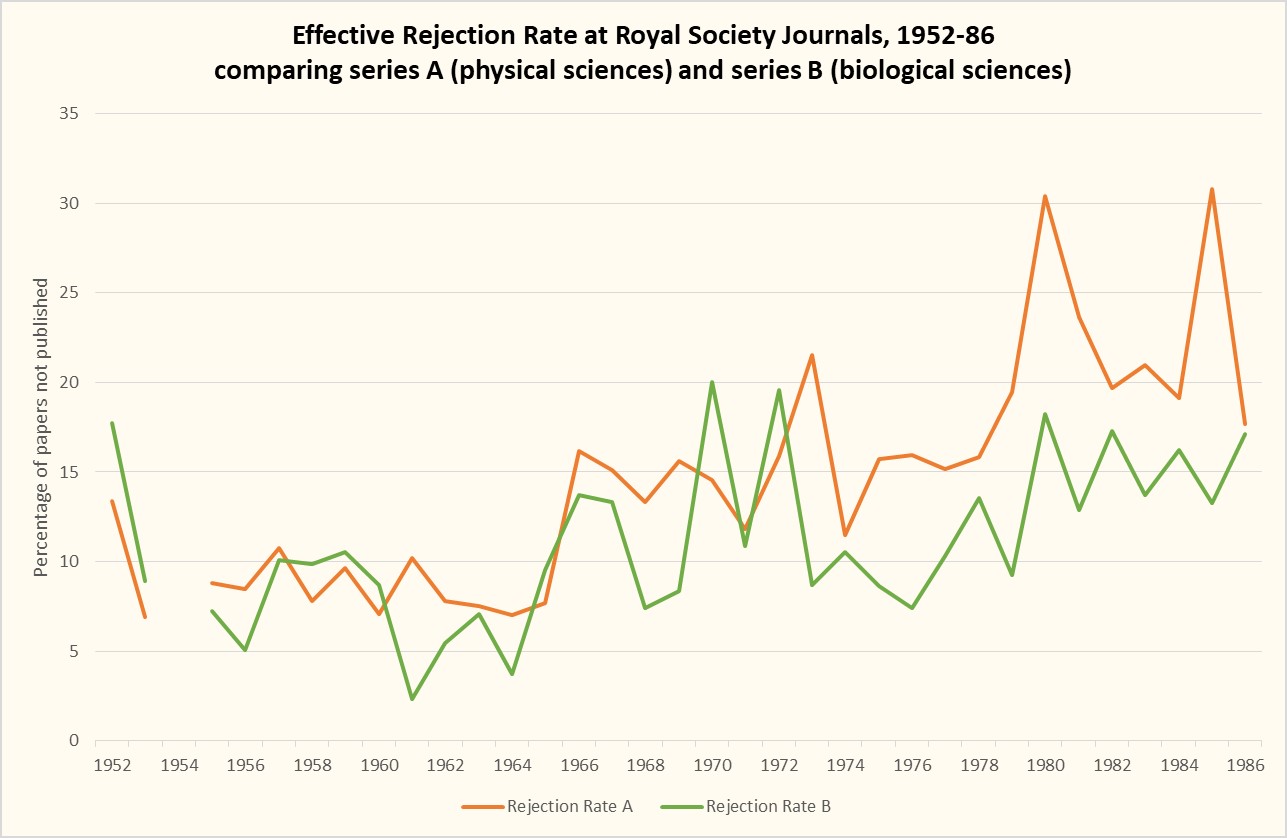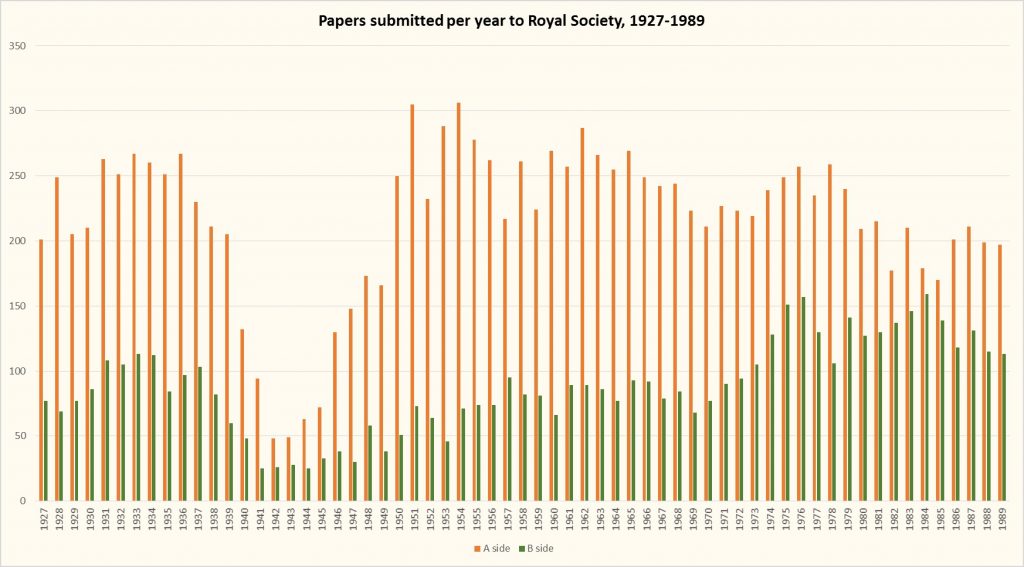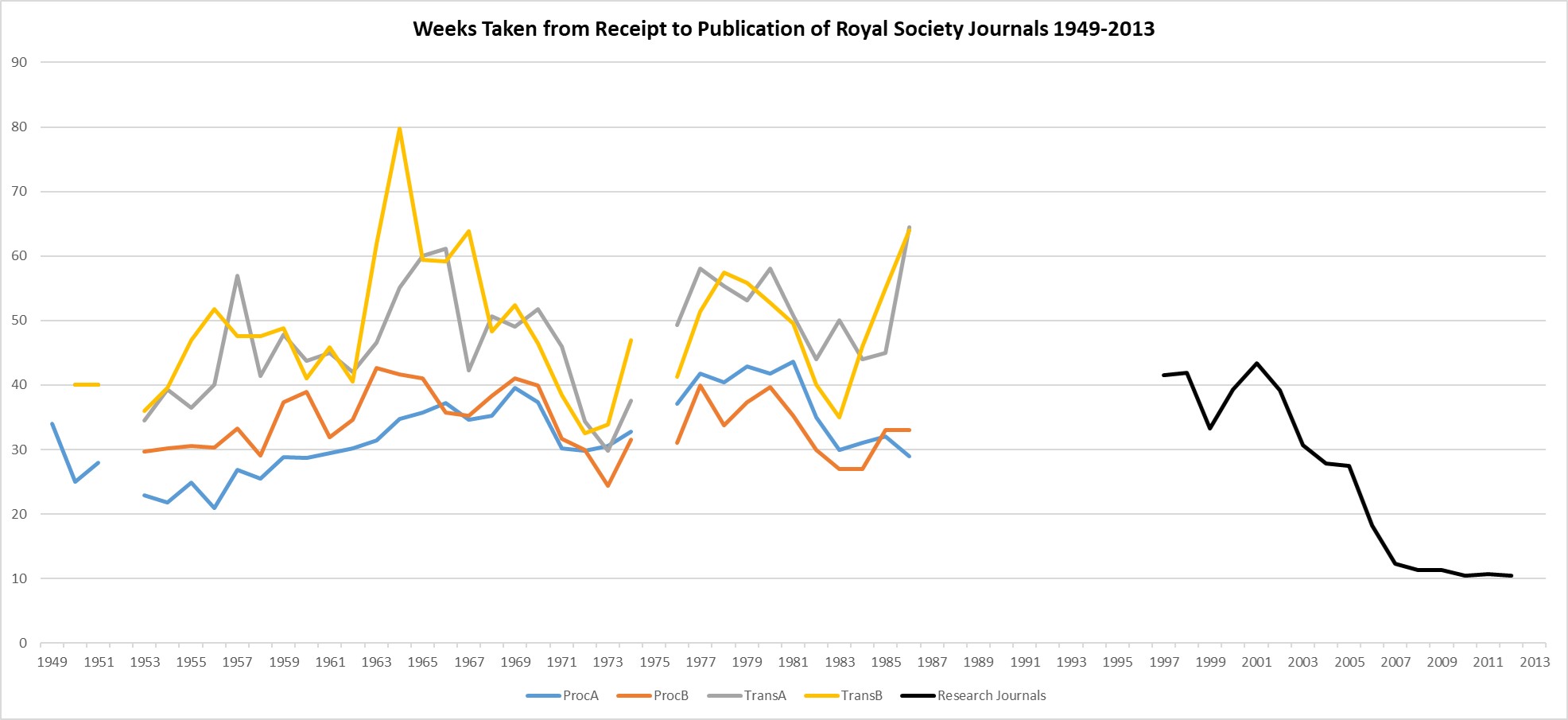How has the average length of a scientific article changed over time? The answer depends on the purpose of the ‘article’ (a letter, a preliminary announcement, a fully-detailed research monograph); the space available in the printed journals; and the contemporary fashion for scholarly writing. But here, nonetheless, are some insights from the history of Royal Society publishing. Continue reading “Length of articles in Royal Society journals”
The Royal Society’s ‘other’ journals
The Proceedings and the Philosophical Transactions may have been the Royal Society’s best-known periodicals in the twentieth century, but they were not its only ones. It also published (and publishes) a number of periodicals aimed largely at an internal audience of Royal Society fellows. Here is what we know about their circulations. Continue reading “The Royal Society’s ‘other’ journals”
Time Taken to Publish
The time taken from receipt of a submission to publication is today frequently used as a ‘key performance indicator’ by academic journals. It is a (partial) measure of the speed or efficiency of the journal’s editorial and production processes (though also highly dependent on the author’s approach to revisions and proofs). The Royal Society has been recording and reporting this metric since the early 1950s, which allows us to produce the graph below:
The Proceedings in the 20th Century
The Proceedings of the Royal Society has been printed since early 1831, when it reported the activities (or ‘proceedings’) of the weekly meetings of the Royal Society. The first meeting reported was that for November 1830. For the rest of the nineteenth century, it carried a mix of content: reports of meetings; annual accounts; summaries of papers presented to meetings of the Societies (similar to abstracts); short stand-alone papers; and occasional longer papers full of data, deemed insufficiently ‘significant’ for publication in the Transactions.
Here, we present some overviews of the twentieth-century Proceedings.
The Transactions in the early eighteenth century
How much difference does the identity of the editor make to the content of a journal? In the early eighteenth century, the answer was ‘quite a bit!’. The first editor of the Philosophical Transactions, Henry Oldenburg had died in 1677, and subsequent editors had a tendency to reinvent the periodical (consciously or not) to suit their own interests or editorial abilities. Here, we present a series of charts to illustrate how the Transactions changed under the various editorial regimes of the early eighteenth century.
Continue reading “The Transactions in the early eighteenth century”
Rejection rates in life sciences vs physical sciences, 1950s-1980s

This graph offers additional detail on the overall rejection rates at the Royal Society’s Transactions and Proceedings in the second half of the twentieth century. As I discussed in that earlier post, the Royal Society historically had a low rejection rate (around 10-15%), due to the filtering-out of papers that was done pre-submission, since papers had to be submitted via a fellow. Continue reading “Rejection rates in life sciences vs physical sciences, 1950s-1980s”
More submissions, more rejections: the Royal Society Journals since the 1950s
I looked at the numbers of submissions to the Royal Society journals in an earlier post. Here, we look at the relationship between the number of submissions, the rejection rate and the sustainability of peer review. Continue reading “More submissions, more rejections: the Royal Society Journals since the 1950s”
The unprofitability of scientific journals, 1750-1900

This graph shows as much information as we have about the Royal Society’s expenditure on publications, and income from sales of publications, from 1752 (when the Society took on the ownership of the Transactions) until 1920.
Continue reading “The unprofitability of scientific journals, 1750-1900”
Submissions in life sciences vs physical sciences, 1927-1989

This graph shows the number of papers submitted to the Royal Society over the course of (roughly) the twentieth century. It includes papers that would ultimately be published in both Transactions and Proceedings, as well as papers that were never published.
Continue reading “Submissions in life sciences vs physical sciences, 1927-1989”

